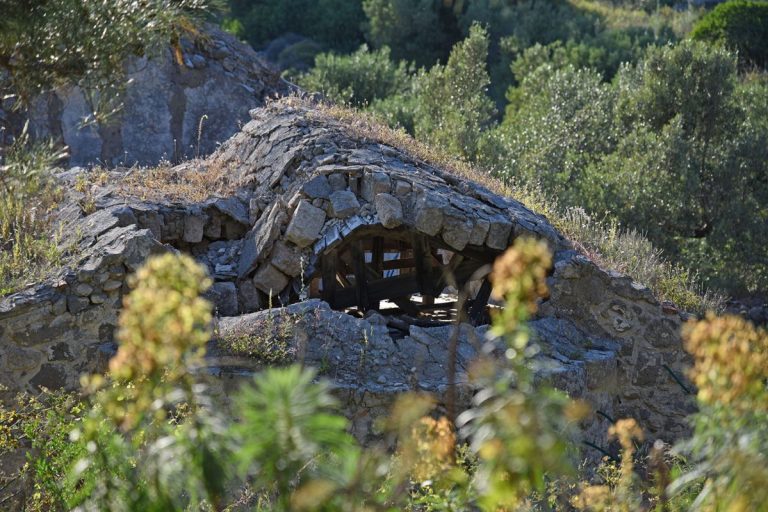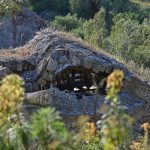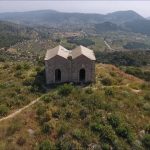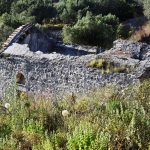Paleochora, once the capital of Aegina from the 9th century to 1826, is a fascinating and haunting place steeped in history. The ruins of this former city tell the story of a time when the island’s inhabitants were forced to move inland due to frequent and devastating pirate attacks, abandoning their coastal settlements for safety.
Despite these precautions, Paleochora suffered greatly at the hands of the infamous pirate Barbarossa, who in 1537, attacked and completely destroyed the island, reducing its people to slavery. The remnants of Paleochora, though mostly ruins, bear witness to the turbulent history and the resilience of the people who once lived there.
Paleochora was eventually abandoned when pirate attacks became less frequent, leading its inhabitants to resettle in what is now Aegina Town. What remains today is a ghost town, with traces of its former glory visible in the ruins scattered across the hillside. The most remarkable features of Paleochora are the surviving churches—of which there were once 365.
Among these, the churches of Episkopi, Agios Georgios, and Metamorphosis stand out for their beautiful frescoes and historical significance. Exploring these churches, you can see the artistry and religious devotion that once flourished in this settlement. The frescoes, though weathered, still retain a sense of beauty and offer a glimpse into the spiritual life of the inhabitants.
Located about 5 km from Aegina Town and just 1 km from the Monastery of Agios Nektarios, Paleochora’s hillside setting provides a panoramic view of the surrounding landscape. As we wandered through the ruins, we were struck by the sense of history and the quiet that now envelops the area. The overgrown paths and crumbling stone structures create an atmosphere that is both eerie and captivating.
Visiting Paleochora is like stepping back in time, allowing you to imagine the lives of those who once called this place home. It’s a place of reflection, where the ruins remind us of the island’s turbulent past and the enduring spirit of its people.
Overall, our visit to Paleochora was an intriguing journey into Aegina’s history. If you’re interested in exploring ancient ruins and learning about the island’s past, this ghost town is a must-see destination. The combination of historical significance, architectural beauty, and a unique setting makes Paleochora a captivating stop on any visit to Aegina.
Sorry, no records were found. Please adjust your search criteria and try again.
Sorry, unable to load the Maps API.





